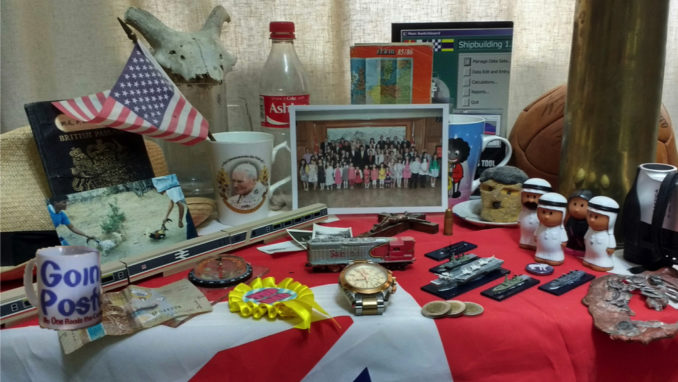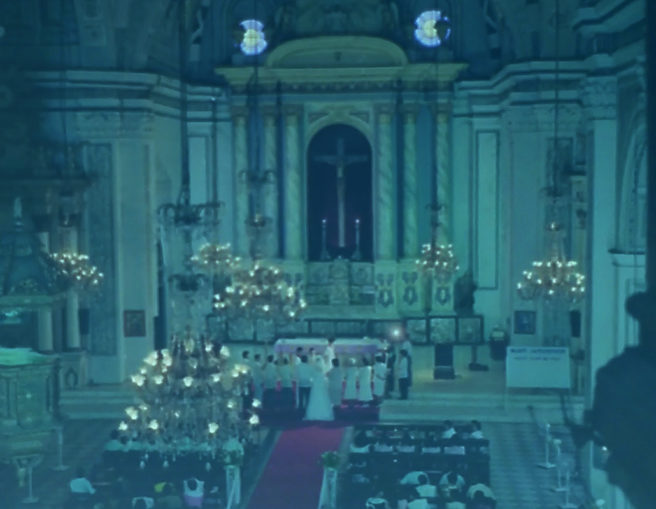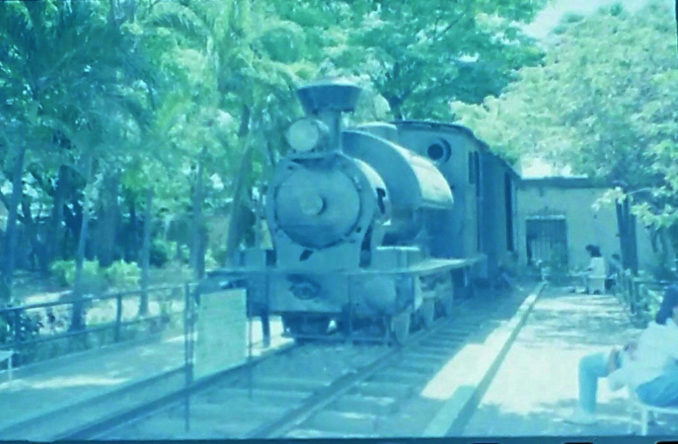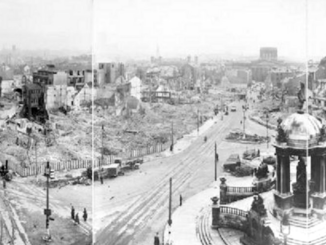
© Always Worth Saying, Going Postal 2019
They, dear reader, say that a humble author should read, read, read as well as write, write, write. In my defence, long-suffering aficionados of our never-ending quest for Lille will have noticed, to name but a few, references to Truman Capote, Conrad and even the Staff Reporter on the legal page of the Manila Sentinel. Those of you paying attention may recall Publius Ovidius Naso’s ‘Metamorphoses’ introducing a day in a taxi in Karachi.
When reading the lavish prose of one’s contemporaries and predecessors, it is tempting to allow oneself to become a bit dispirited but may I point out that my own humble work, with its skeletal description, thinly drawn characters, constant jumping about between different places, far-fetched plot, endless mentions of God, the Middle East and the church is, (rather than being a story as shaggy as a scruffy dog sat next to a character from Scooby-Doo at a Shaggy concert), somewhat Biblical? And before you join numerous family members, friends and former colleagues chanting,
‘For God’s sake man, you CAN still tell the difference between what really happened and what you’re just making up?’,
I would wager a denarius or three, that a Gospel writer may have heard much the same thing (from those in the know), when he read out his own early draft in a locked upstairs room above a tavern, in front of a rough crowd, in Caesarea Phillipi.
I’m the same age as Boris Johnson. They say, when a very young man, he wanted to be ‘King of the World.’ He lacked ambition, I wanted to be God.
Football manager Tommy Docherty, when asked to comment on his then Chairman, reworked the ‘legend in his own time’ cliché to,
‘Ah yes, Derek Duggan, a legend in his own mind.’
I stand with The Doog, and dear readers, by awarding me a (fourth) prize in the writing competition, you’re just encouraging me. Heartfelt thanks.
And if you’re wondering what the brown blob is (in front of the artillery shell), it’s a ground zero, of sorts. The credit card company told me to destroy my old credit card, so I had it bombed. And yes, that is a bust of Hitler, made from an unwanted gift of multicultural skin tone play dough. It seemed the obvious thing to do with it.
As for the Panama hat (next to the skull), I want you to imagine it on the back seat of an armour-plated Toyota Camry approaching Redemptorist’s Church at Baclaran, a place renowned for its miraculous granting of intentions. Its other great attraction being that it is beside the LRT, allowing a nervous foreign driver to find it by following the elevated railway line, like a bomber on a moonlit night following the Rhine to Cologne.
It had been my turn to drive. Heading back towards the centre of Manila, the roads were very crowded and I was reaching the limit of my MMMA (Metro Manila Motoring Ability). We abandoned the car (rather than try to park it) and fought our way through the crowds and into the basilica. It was packed. The Holy Father’s visit was close now and there was a remarkably well attended (daily) Novena. If you asked me to guess, then I would say that there were at least ten thousand people filling the church.
I pulled Gisele to one side and pressed her hand against the foot of a religious statue. I administered a fearsome oath to her beginning, ‘What you are about to hear is proprietary and top secret, it is for your ears and your ears alone’, making her swear, in her own language, on the well-being of her loved ones and the honour of her family, to keep the confidences that I was about to share with her.
We pushed a space for ourselves on the end of a pew. The place was noisy, which suited our purpose. She’d reached the limit of her patience with me and I had to indoctrinate her, to tell her more about the danger and opportunity hurtling towards us. I pressed my mouth against her ear and repeated what the Irish nun had told me at the orphanage earlier that day.
‘The Moros plot to kill the Pope and as many Christian pilgrims as they can. It is organised from the South by their terrorist organisation Abu Sayyaf.’
I told her that a well-known War Lord was sending teams of assassins, maybe twenty-five terrorists in all.
‘They are already on the move. They will come to Manila disguised as Christians amongst the pilgrims. They are unarmed and will buy black market guns and ammunition en route. The badly kept part of the secret is that there’s a reward for information leading to their capture. The nuns have some of the names and one or two of their possible rendezvous points here. Whoever guesses right and gets the information to the authorities, expects to prevent a massacre and get a big, big reward.’
Leaving Baclaran, we swapped over the driving. Despite busier, narrower roads, Gisele drove with more speed and less concentration than myself, as if a homing pigeon rather than a pilot on an Avro Lancaster. If we were to pray at seven churches in seven hours, for the protection of the Holy Father and the completion of our potentially very profitable task, then we needed another holy place quickly.
‘There’s a church opposite The Swagman,’ I suggested.
‘In Ermita? On ‘The Strip’? How would you know about that place, mister?’
‘A friend told me.’
‘No friend of mine would know of such a place, grrrr,’ she pointed the car towards Intramuros and put her foot down.
I sat in the passenger seat. I had a cell phone by now and was busy whispering ‘Matilde? Matilde?’, to a silence from the other end.
Entering Intramuros, we were in the oldest part of the city. We drove through the 16th century Spanish built walls and parked where only our CD plated Camry could.
Intramuros is a muddle of old colonial-style buildings amongst modern factories and workshops. It had been flattened during the war and an eclectic mix of restored and new buildings had sprouted from the ruins.
A girl welcomed us at the entrance to San Augustine Church, she would take us to somewhere that we could pray as the knave was ‘occupied’.
We passed along a corridor which served as the church’s museum. The artefacts included bells, artworks and some statues of the saints. Our guide told us of the Malay and Moro traders and raiders (who’d brought Islam to some of the islands) and of Magellan planting the Spanish flag at Limasawa in 1521 to claim the islands for God, the Pope and King Philip of Spain.
As the Spanish empire crumbled, the Philippines became an American colony between 1898 and the Second World War, when it was occupied by the Japanese. After the war, the islands became an independent country but there remained an American influence, which by this time was unwelcome.
Gisele interrupted,
‘Three hundred years in a convent and one hundred in Disneyland. That’s all you need to know, mister. Let’s pray, this will be number four’.
We crept upstairs, our guide hushing us, into the choir loft. The three of us popped our heads above a parapet and looked down onto a church packed for weddings. There were four couples at the altar being matched by a priest.

© Always Worth Saying, Going Postal 2019
Gisele whispered to me, ‘In our place, if you want a private wedding you must pay and choose a quiet time – middle of the night’. We spoke quickly and quietly in very correct English so that our guide wouldn’t understand us.
Gisele already had a plan, famously she had eighty-seven cousins and many of them were well connected. Cousin Christie had the hostels and FX’s on Negros, her family seat was Josephina City, a cousin had a TV station and another a bank. Close relative Hubert was in jail, accused of the Vizconde massacre. He knew the crime families. I must advance her one hundred thousand Pesos from the reward for bribes and commissions. Ding was at the airline, the Brigadier General in charge of the airport was a friend of ours. There was a big enough web for a catch.
She would put me to work too, send me down to the South where her family were afraid to go, to my sponsor gangster-gangster Cortez, to the Cortez family’s schools, their farms and the Citizen’s Army, network-network. I must find out all the names and likenesses of the Moros and send them up to Manila.
‘Our dear friend in business Mr Geronimo De Reyes? Computer Club, the trap door flash? Get busy-busy with that also, mister’.
Gisele would get busy-busy too. While I was down in the South she would, having cast that giant web across the archipelago, stay in Manila for the ‘kill’.
‘No heroics, Gisele’, I reminded her, ‘just information leading to arrests.’
‘We can do it mister, you me and God. It will be good for the reputation of the family and for Hubert’s court case’.
We strolled on to Manila cathedral to pray there. The scene of heavy fighting during the liberation from Japanese occupation in 1945, we had an opportunity to count bullet holes and shrapnel marks.
We knelt again and I tried to calm her down. It was very bad manners to contradict someone face to face in public. The local custom would have been to tell a friend of mine, who would tell a friend of hers, who would tell Gisele in private. Needs must and all that, I would just have to risk it.
I told her that hers was an excellent plan, but there was a big problem.
‘It’s a false trail, Gisele, none of it is true.’
‘How can you be sure?’ she snapped.
‘I’m very short of cousins, miss, but I’ve built up a lot of contacts, accidentally, in a very English kind of way. I understand that while I was lying low in Sipalay there were some international calls for me.’

© Always Worth Saying, Going Postal 2019
At the north end of Intramuros, we entered Fort Santiago both a monument and a shrine, where I touched the cheek of national hero Jose Rizal. Here on a plinth is the little sugar cane engine that bore him in a wagon to Manila, Christ like, to face execution for what he believed. Some artefacts were kept inside nearby, his bed, some of his poetry and his ophthalmic equipment. Also, a wax work of himself, 4’11’ and bespectacled.
An armed guard invited me to write in the visitor’s book and make a donation.
I crumpled some notes into a box and followed Gisele upstairs to the top of the fort’s battlements.
Before us, beyond the castellation, the Pasig river prepared to meet Manila Bay. Beyond us, the docks at Tondo, beneath us, a fisher’s village of tiny huts on stilts leading out into the waters.
Stevedores on the back of piloted ships hurled abuse at this white. Gisele hurled it back with interest, unconcerned by the sacred ground her feet touched. Children swam in the dirty water. Huddled figures with improvised rods dangled lines into the murky, rubbish strewn, lifeless water.
‘In the time of Marcos, dead bodies flowed down this place. Still in death the rigor mortis made their arms stuck out stiff. They waved to the martyrs as they floated to the sharks in the bay,’ she told me.
We went downstairs to the actual shrine to pray. It could be another of our seven. Some nuns were kneeling in a basement. It was an ordinary space, dark, slightly larger than an English home’s lounge. In Spanish times these had been dungeons, during the Japanese occupation, a place of massacre. The dead remembered now as martyrs had been found by the liberators packed from floor to ceiling, as lifeless, naked limbs and torsos.
We knelt on the floor beside the nuns, praying for the Holy Father.
When the nuns left, I could brief Gisele in a respectful hush.
‘Those calls were from my contacts in Saudi Arabia, the attack is planned from there. Likewise, Pakistan, there is a ‘rat run’ from the Gulf to Pakistan to here, along the migrant workers route. The Moros from the South is a false trail meant as a distraction. The assassins will be Afghans and Pakistanis, they may already be here.’
The sudden lower latitudes dusk-less sunset was long gone by the time we visited our next place. It was closed. It was a cemetery, circular and high walled, within a residential area. Goons stood at the entrance. An attendant allowed us in anyway.
‘He is from our province. I speak his dialect,’ Gisele explained.
We were led across rough ground, between standing and fallen headstones, our way lit by the attendant’s torch and cascades of dim fairy lights hanging from the cemetery’s trees.
‘We are a provincial people’, she took this as an excuse to light up and waved a cigarette at me, its end glowed like an exotic mating insect in the gloom.
‘In our place, women cannot smoke or drink. In public, on Josephina Island, I would be slapped. We are old fashioned,’ she pulled a face, ‘grrrrrr’.
She made another one of her noises, ‘wooooooosh’.
We stood by a tomb built into the perimeter wall of the once rural cemetery, consequently swamped by the modest homes and business premises of a crowded subdivision rapidly expanding.
‘This is a sacred place too. It makes our lucky seventh’.
The attendant had wandered off and locked up, locking us in. This wouldn’t be a problem for Gisele. As a provincial girl, she was used to swimming out to boats, riding buffalo and climbing coconut trees. Fences and barbed wire were a day off for her. As a slightly north of five-foot tall female, she wasn’t even afraid of railings topped by big spikes. Tackling assassins for a big reward was no more than some interesting overtime at the office.
This place was most special, as it was the original resting place of the father of the nation, Jose Rizal, the mild-mannered ophthalmologist, martyred by a Spanish firing squad because of his nationalist poetry.
‘Let us wish on a star,’ she ventured.
We looked up, hoping for inspiration. The stars twinkled back at us. They were countless. As my eyes adjusted to the night sky, they became even more numerous.
‘A city of twelve million and assassins to find,’ Gisele noted, ‘where can we start?’
‘With a rendezvous’, I replied, ‘want to come along?’
© Always Worth Saying 2019
The Goodnight Vienna Audio file



